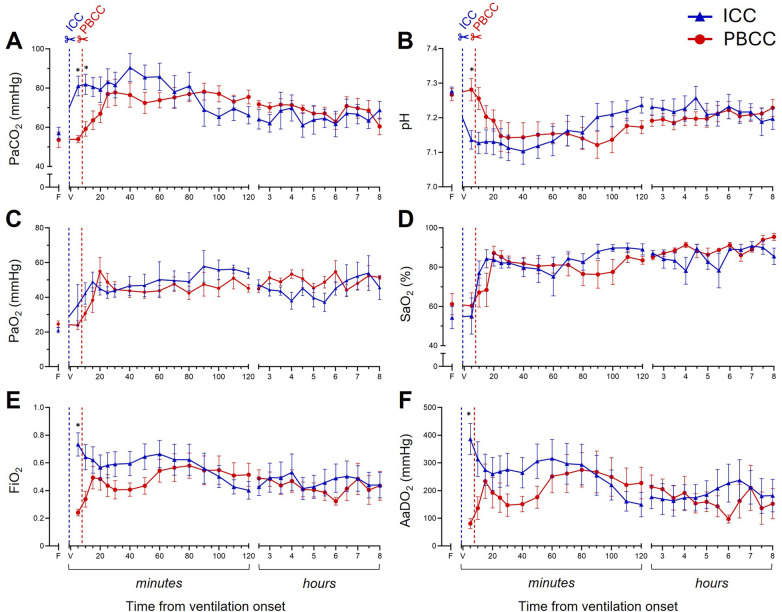Figure 5.
Blood gas status and gas exchange efficiency during the 8-h neonatal ventilation. Partial pressure of carbon dioxide (PaCO2, A), pH (B), partial pressure of oxygen (PaO2, C), arterial oxygen saturation (SaO2, D), fraction of inspired oxygen (FiO2, E), and alveolar-arterial difference in oxygen (AaDO2, F) measured over the 8-h ventilation period in lambs with a diaphragmatic hernia (DH) receiving immediate cord clamping (ICC, blue triangles) or physiologically based cord clamping (PBCC, red circles). Timing of umbilical cord clamping relative to ventilation onset shown by blue (ICC; cord clamped prior to ventilation onset) or red (PBCC; cord clamped when a tidal volume of 4 ml/kg was achieved or at a maximum of 10 min) dotted line. Data are expressed as mean ± SEM. In the ICC DH lambs, n = 9 at ventilation onset and n = 4 at 8 h, whereas in the PBCC DH lambs, n = 12 at ventilation onset and n = 4 at 8 h. Mixed-effects analysis with Holm–Sidak multiple comparisons, *p < 0.05 for the effect of group (ICC vs. PBCC). F = fetal measurement before ventilation onset, V = ventilation onset.

